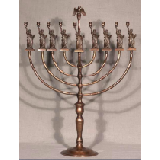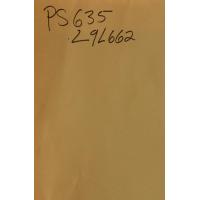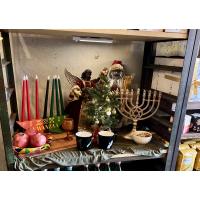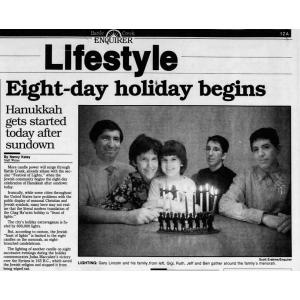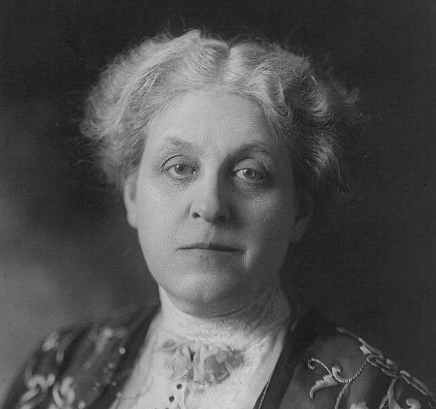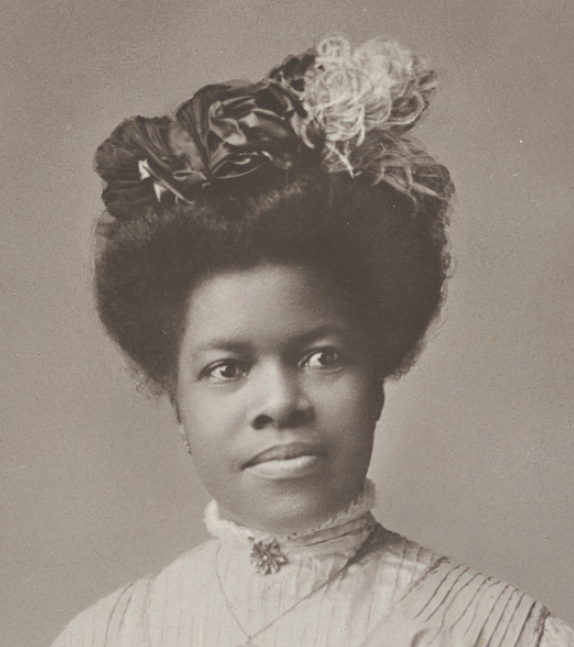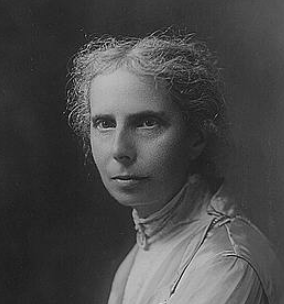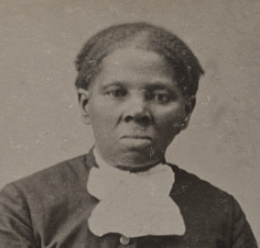Here's a quick reminder to please consider contributing to our American Jewish Experience Hanukkah Album an artifact or personal reminiscence about the observance of Hanukkah.
Alternatively, and of great value, would be album entries chosen from previous TPS Hanukkah materials or suggested Library of Congress resources:
- Hanukkah in the Library’s Collections: Celebrating Freedom, Light and Latkes (Minerva’s Kaleidoscope blog post)
- Today in History: Happy Hanukkah (Primary Source Nexus)
- The Truth Behind the Hanukkah Dreidel: Metafolklore, Play, and Spin (Folklife Today blog post)
Wishing all TPS members and your families the very best for the upcoming winter holidays!
 Michelle Zupan
, for this important reminder to take into account spelling variations when doing a search related to this holiday.
Michelle Zupan
, for this important reminder to take into account spelling variations when doing a search related to this holiday. Chanukah sketch
If you are teaching about the winter holidays, remember that Hanukkah can be spelled many different ways: Chaunukah, for example.
https://www.hanukkahfun.com/179/variations-in-hanukkah-spelling-explained/
Thank you,  Cheryl Davis
, for including this very uplifting & unifying image of winter holiday celebrations and for sharing your own special memories of working at the Jewish summer camp.
Cheryl Davis
, for including this very uplifting & unifying image of winter holiday celebrations and for sharing your own special memories of working at the Jewish summer camp.
Coffee shop display in Santa Monica, California
My son snapped this photo last week of a holiday display in a coffee shop in Santa Monica California. This display certainly gathers together many holiday celebrations. Students might look for shop displays that celebrate Hanukkah and make a photo collection.
It is wonderful to have this album to share and understand the history and significance of Hanukkah and the stories of family and community celebrations.
My husband and I met, worked for many summers and got married at a Jewish Summer Camp for children in Northern California, El Rancho Navarro (neither of us Jewish). We enjoyed learning about the traditions and cherish the memories.
Hanukkah, which is Hebrew for “dedication,” is the Festival of Lights. The holiday commemorates the victory of the Maccabees over the Syrian Greek army, and the subsequent miracle of rededicating the Holy Temple in Jerusalem and restoring its menorah, or lamp.
With a recent surge in antisemitic acts, many individuals feel the need to publicly celebrate Hanukkah as a powerful statement of Jewish pride and identity in the face of growing intolerance.
- Hanukkah in the Library’s Collections: Celebrating Freedom, Light and Latkes (Minerva’s Kaleidoscope blog post)
- Today in History: Happy Hanukkah (Primary Source Nexus)
- The Truth Behind the Hanukkah Dreidel: Metafolklore, Play, and Spin (Folklife Today blog post)
Hanukkah, which is Hebrew for “dedication,” is the Festival of Lights. The holiday commemorates the victory of the Maccabees over the Syrian Greek army, and the subsequent miracle of rededicating the Holy Temple in Jerusalem and restoring its menorah, or lamp.
With a recent surge in antisemitic acts, many individuals feel the need to publicly celebrate Hanukkah as a powerful statement of Jewish pride and identity in the face of growing intolerance.
- Hanukkah in the Library’s Collections: Celebrating Freedom, Light and Latkes (Minerva’s Kaleidoscope blog post)
- Today in History: Happy Hanukkah (Primary Source Nexus)
- The Truth Behind the Hanukkah Dreidel: Metafolklore, Play, and Spin (Folklife Today blog post)
Wonderful news article and very special photograph  Margaret Lincoln
Margaret Lincoln
Lighting the family menorah
A Battle Creek Enquirer newspaper article from December 19, 1992, highlighted the significance of Hanukkah, the Jewish "festival of lights," which some 32 years ago corresponded to the city of Battle Creek’s own holiday extravaganza display of 600,000 lights. The celebration of Hanukkah involves lighting a menorah with eight candles over eight nights, commemorating Judas Maccabee's victory in 165 BC that preserved Jewish identity. Families light the menorah together, and the holiday also includes gift-giving, particularly on the first night.
In the article, Rabbi Ernst Conrad (who served as visiting rabbi to Battle Creek’s Temple Beth El) shared his personal connection to Hanukkah, having escaped Berlin before World War II, where his mother was killed at Auschwitz.
This Hanukkah, may we continue to reflect on the profound significance behind the festival of lights. The holiday is not just about celebrating the victory of Judas Maccabee but a reminder of the importance of religious freedom.
May we strive for awareness and tolerance, fostering a more inclusive society for all.
A Battle Creek Enquirer newspaper article from December 19, 1992, highlighted the significance of Hanukkah, the Jewish "festival of lights," which some 32 years ago corresponded to the city of Battle Creek’s own holiday extravaganza display of 600,000 lights. The celebration of Hanukkah involves lighting a menorah with eight candles over eight nights, commemorating Judas Maccabee's victory in 165 BC that preserved Jewish identity. Families light the menorah together, and the holiday also includes gift-giving, particularly on the first night.
In the article, Rabbi Ernst Conrad (who served as visiting rabbi to Battle Creek’s Temple Beth El) shared his personal connection to Hanukkah, having escaped Berlin before World War II, where his mother was killed at Auschwitz.
This Hanukkah, may we continue to reflect on the profound significance behind the festival of lights. The holiday is not just about celebrating the victory of Judas Maccabee but a reminder of the importance of religious freedom.
May we strive for awareness and tolerance, fostering a more inclusive society for all.
Hanukkah, which is Hebrew for “dedication,” is the Festival of Lights. The holiday commemorates the victory of the Maccabees over the Syrian Greek army, and the subsequent miracle of rededicating the Holy Temple in Jerusalem and restoring its menorah, or lamp.
With a recent surge in antisemitic acts, many individuals feel the need to publicly celebrate Hanukkah as a powerful statement of Jewish pride and identity in the face of growing intolerance.
- Hanukkah in the Library’s Collections: Celebrating Freedom, Light and Latkes (Minerva’s Kaleidoscope blog post)
- Today in History: Happy Hanukkah (Primary Source Nexus)
- The Truth Behind the Hanukkah Dreidel: Metafolklore, Play, and Spin (Folklife Today blog post)

The Moment Music Stood Still: The Nova Music Festival Exhibition is a powerful memorial dedicated to the lives lost and forever changed at the Nova Music Festival in Re’im Israel on October 7, 2023.
The traveling exhibition opened in Tel Aviv in December 2023 and has since been viewed in New York City, Los Angeles, Philadelphia and Detroit where I recently was privileged to see it. The exhibition travels next to Miami.
Through a primary source collection of remnants and personal artifacts salvaged from the festival grounds, as well as video testimonies and written first-person accounts, visitors are invited to experience the stories, memories and messages of those who were present at the festival.
The Detroit pop-up exhibit centers around a unifying call from survivors: “We will dance again,” and serves as a testament to both the vibrancy of life before the tragedy and the strength that emerges in its aftermath.
The exhibition website provides press coverage, including a very powerful CBS Sunday Morning segment. Due to security measures, an upcoming schedule is not readily available but there is an option to sign up via email for a NOVA Newsletter.
If you have already viewed the exhibition or are able to attend in the coming months, please share your impressions.
May the exhibition continue to serve as an enduring memorial enabling viewers to “bear witness” to the events that occurred on that day and to look with hope and healing toward the future.
Nova Music Festival Israel–Hamas war Museum exhibitions Difficult Topics
What an incredible acquisition for posterity. Thank you for the heads up and the streaming link!
Radio Station WEVD and the Sounds of Jewish New York

A recent article from the Jewish Telegraph Agency recounts how the New York Public Library acquired a ‘treasure trove’ of Jewish and Yiddish music after being hidden in a cantor’s basement in Yonkers for 40 years.
Sheet music, manuscripts and orchestral arrangements for close to 4,000 musical works — including cantorial music, Hasidic melodies, Yiddish theater, klezmer and opera — that were performed live on the radio station WEVD between 1927 and 1995 are now part of NYPL’s Dorot Jewish Division
At the NYPL’s main branch on Wednesday, November 13 at 7:00 pm there will be a live musical performance and a panel conversation to celebrate the Library’s acquisition of rare sheet music and manuscripts from the legendary New York radio station WEVD.
Tickets for “WEVD and the Sounds of Jewish New York” are sold out but the event will be live-streamed here.
How fortunate we are to have access to the WEVD Music Collection which contributes to the understanding of Jewish and Yiddish music history in the United States and which allows us to reflect on the importance of preserving such cultural artifacts.
Testimonials
- I love that there is new info on the site daily!
- I had a wonderful time working with the Library of Congress and learning about all of the resources at my fingertips!
- The TPS Teachers Network has an equal exchange of ideas. You know it's not a place where you're being judged.
- My colleagues post incredibly fine resources and ideas....the caliber of the suggestions and resources make me feel that I take a lot from it. It's a takeaway. And I hope that I can give back as much as I get.
- Going into this school year, I have a fantastic new resource for my own instruction and to share with my colleagues!
- I am very glad that I discovered the TPS Teachers Network through RQI. Great resources can be hard to find out there on the internet!

